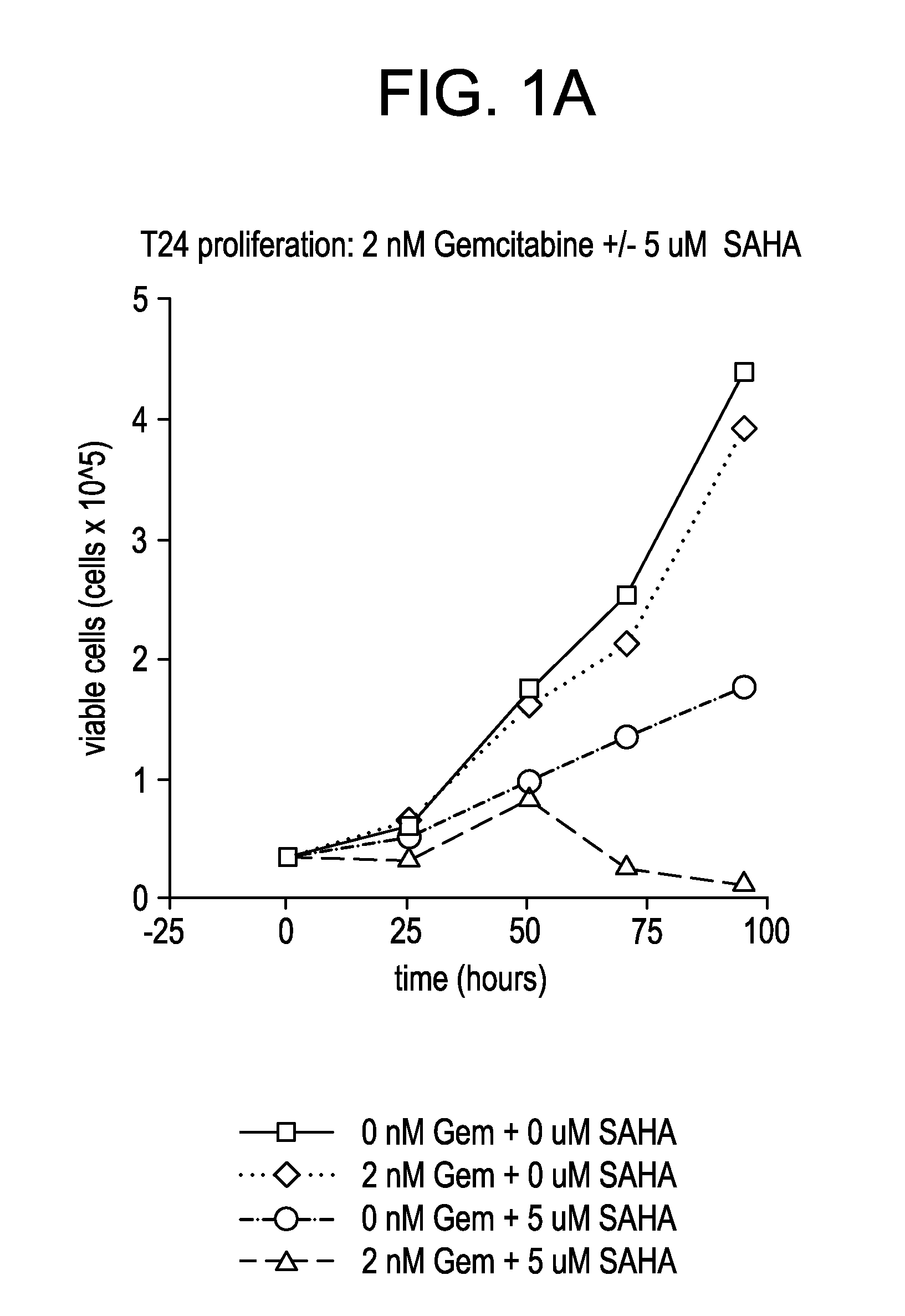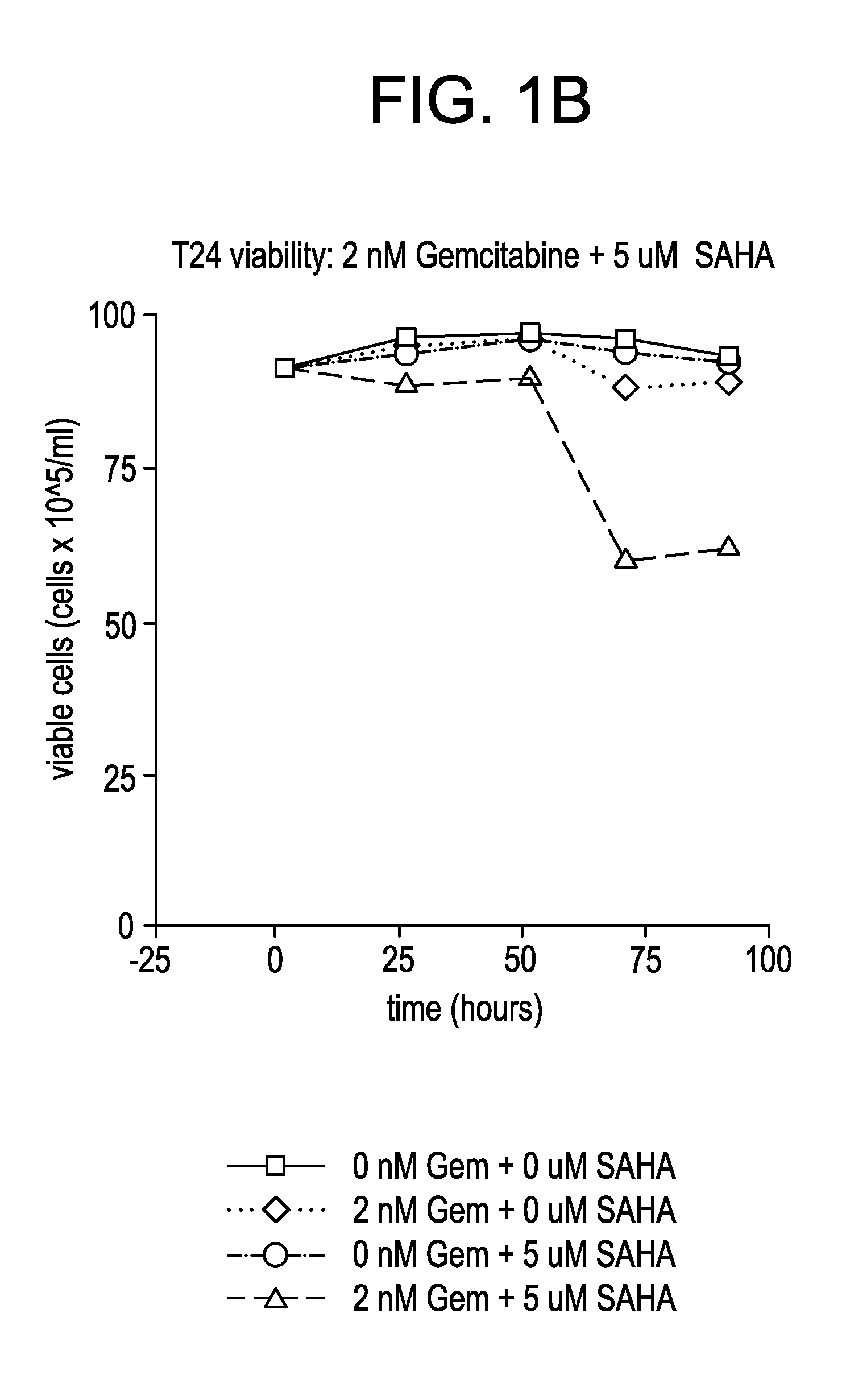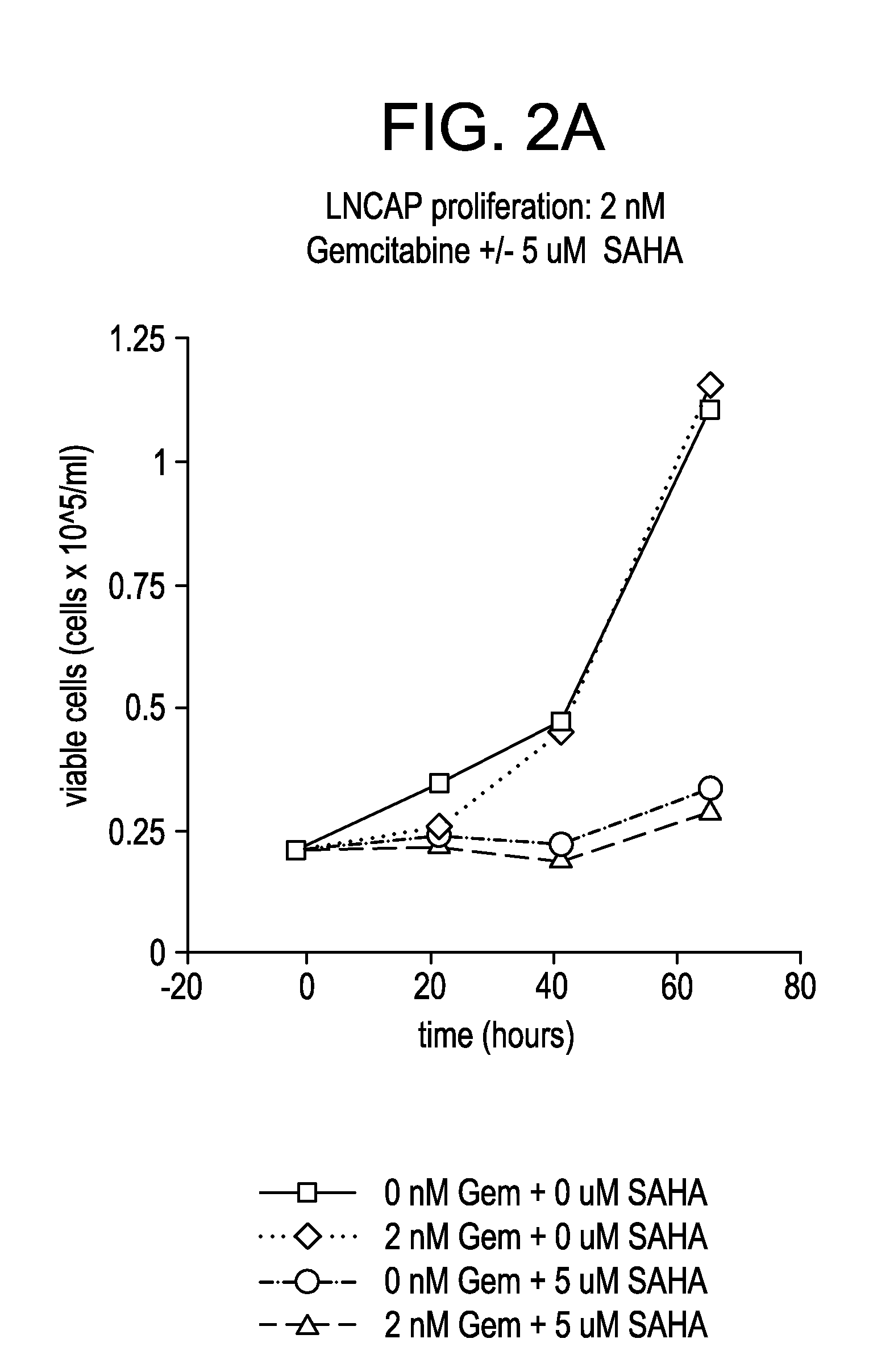Combination methods of treating cancer
- Summary
- Abstract
- Description
- Claims
- Application Information
AI Technical Summary
Benefits of technology
Problems solved by technology
Method used
Image
Examples
example 1
Synthesis of SAHA
[0321]SAHA can be synthesized according to the method outlined below, or according to the method set forth in US Patent 5,369,108, the contents of which are incorporated by reference in their entirety, or according to any other method.
Synthesis of SAHA
Step 1—Synthesis of Suberanilic Acid
[0322]
[0323]In a 22 L flask was placed 3,500 g (20.09 moles) of suberic acid, and the acid melted with heat. The temperature was raised to 175° C., and then 2,040 g (21.92 moles) of aniline was added. The temperature was raised to 190° C. and held at that temperature for 20 minutes. The melt was poured into a Nalgene tank that contained 4,017 g of potassium hydroxide dissolved in 50 L of water. The mixture was stirred for 20 minutes following the addition of the melt. The reaction was repeated at the same scale, and the second melt was poured into the same solution of potassium hydroxide. After the mixture was thoroughly stirred, the stirrer was turned off, and the mixture was allowe...
example 2
Effect of SAHA and Gemcitabine Combinations in T24 Cell Line
[0332]SAHA was used in combination with gemcitabine, leading to an observed combinatorial synergistic effect that is greater than the additive effect that would have been obtained by using each of the agents alone.
Materials and Methods:
[0333]Cells were plated at a density of 1.25×104 cells / ml in MEM alpha medium with 10% FCS, and were allowed to adhere to wells.
[0334]Gemcitabine was reconstituted in MEM alpha medium and the pH was adjusted to 7 using 1N NaOH. Concentrations of gemcitabine were prepared by serial dilution of gemcitabine in complete medium. Concentrations of SAHA were prepared from 1 mM stock solutions.
[0335]Cells were left untreated, treated with SAHA alone, gemcitabine alone, or simultaneously with a combination of SAHA and gemcitabine by aspirating wells and refilling with the relevant medium at the indicated concentrations. The cells were then cultured with medium containing the compound or combination of...
example 3
Effect of SAHA and Gemcitabine Combinations in a LnCap Cell Line
Materials and Methods:
[0340]Cells were plated at a density of 2.5×104 cells / ml in RMPI medium with 10% FCS, and were allowed to adhere to wells.
[0341]Gemcitabine was reconstituted in medium and the pH was adjusted to 7 using 1N NaOH. Concentrations of gemcitabine were prepared by serial dilution of gemcitabine in complete medium. Concentrations of SAHA were prepared from 1 mM stock solutions.
[0342]Cells were left untreated, treated with SAHA alone, gemcitabine alone, or simultaneously with a combination of SAHA and gemcitabine by aspirating wells and refilling with the relevant medium at the indicated concentrations. The cells were then cultured with medium containing the compound or combination of compounds.
[0343]To assay for proliferation and viability, triplicate samples of cells were harvested and counted for proliferation and viability at the indicated time points as described above in Example 2.
Results:
[0344]LnCap...
PUM
| Property | Measurement | Unit |
|---|---|---|
| total volume | aaaaa | aaaaa |
| enantiomeric excess | aaaaa | aaaaa |
| enantiomeric excess | aaaaa | aaaaa |
Abstract
Description
Claims
Application Information
 Login to View More
Login to View More - R&D
- Intellectual Property
- Life Sciences
- Materials
- Tech Scout
- Unparalleled Data Quality
- Higher Quality Content
- 60% Fewer Hallucinations
Browse by: Latest US Patents, China's latest patents, Technical Efficacy Thesaurus, Application Domain, Technology Topic, Popular Technical Reports.
© 2025 PatSnap. All rights reserved.Legal|Privacy policy|Modern Slavery Act Transparency Statement|Sitemap|About US| Contact US: help@patsnap.com



